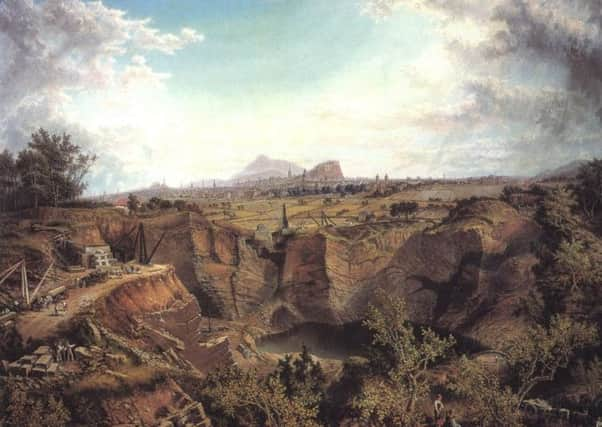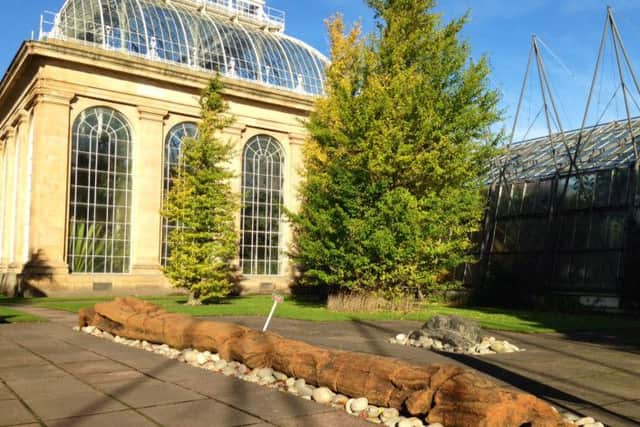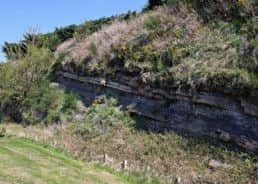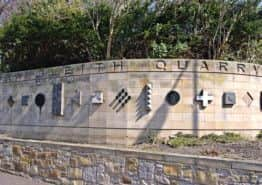Lost Edinburgh: Craigleith Quarry


Located two miles north-west of Edinburgh city centre, Craigleith Quarry was active for over 300 years from 1615-1942. At its peak it was the largest and most productive of the city’s eight district quarries, with over a hundred workers generating up to sixty cartloads of stone at least four times a day. The 350 million year old Craigleith sandstone was a highly-sought after material for the capital’s architects and notoriously tough to quarry and work. Evidence of this is apparent in its buildings which have weathered well over the centuries.
In the same manner that red stone defines much of Glasgow and silvery-grey granite dominates Aberdeen, the overwhelming presence of grey-brown sandstone visible in central Edinburgh, much of it sourced from Craigleith, lends the capital its own distinct colour and personality.
Early days


Advertisement
Hide AdDuring its early years of operation the quarry was known as Innerleith or Enderleith, with the name Craigleith first plotted in maps of the Edinburgh area in 1733.
In 1619 the highly-durable qualities of the quarry’s contents were put to good use when stone was transported by King James VI’s own carts for construction works on Edinburgh Castle. Later on that century sandstone from the quarry was also used to construct the Tron Kirk and to rebuild sections of Holyrood Palace.
New Town
From the late 18th century onwards the persistent din of hammer on iron would have emanated from Craigleith Quarry. Edinburgh’s New Town was by far the most ambitious and extensive construction project that the city had ever undertaken and its creation prompted a massive surge in demand for good quality stone. Nearby Craigleith was an obvious candidate as chief supplier.


Major civic buildings comprised of Craigleith sandstone would go on to include Register House, the City Chambers, the City Observatory atop Calton Hill, Parliament Square, the Dean Bridge (which substantially shortened the route into central Edinburgh), and a large proportion of the attractive Georgian townhouses across Edinburgh’s sprawling New Town.
Old College pillars
Robert Adam’s University of Edinburgh Old College on South Bridge begun in 1789 provides a marvellous example of the exceptional quality of Craigleith sandstone. The façade’s six enormous pillars, each weighing in at nine tons, were hewn, not from segments, but from single lumps of Craigleith stone and required sixteen horses to haul them one by one from the quarry.
Similarly in 1826, several massive blocks weighing a total of 1,500 tons were heaved out of Craigleith, by the brute force of twelve horses and seventy men to the top of Calton Hill, to build the National Monument.


Advertisement
Hide AdThe opening of a railway line to Craigleith in 1850 would bring an end to such Herculean feats. Not that such a technological leap made the mason’s task any easier. One prominent Edinburgh physician was quoted as saying that ‘an old Craigleith man was done at 30 and died at 35’ - referring to the many workers who died before their years mostly due to excessive stone dust inhalation.
Fossil trees
Between 1826 and 1873 a number of fossilised trees dating from the Carboniferous period were discovered in the quarry – some as long as 36 feet in length. One of these trees can be visited outside the glasshouse of the Royal Botanic Gardens at Inverleith.
Last days
Advertisement
Hide AdOne of the last major works involving Craigleith sandstone was the construction of Leith Docks in the late 19th century. The quarry had carved a fine reputation for itself around the world, exporting a lot of stone, particularly to London, as well as Europe and the United States. However, it was now approaching the end of its workable life. By the 1920s, less than 25 masons were registered as working at the quarry and the growing suburbs around Craigleith and Blackhall meant that its days were definitely numbered.
Half way through the Second World War, all work on the quarry had ground to a halt. For the next 50 years Craigleith would be utilised as the city’s principal refuse dump and the 110 metre deep cavity was gradually filled in.
Retail park
In 1993 the site of the former Craigleith Quarry was purchased by the Sainsbury group. It has now developed into the popular Craigleith Shopping Park – its historic significance somewhat masked by the invasion of High Street retail outlets.
Despite its location, the stonework at the entrance to the retail park bearing the name ‘Craigleith Quarry J Sainsbury’ was sourced 130 miles away from Stainton in northern England.
A large section of exposed sedimentary rock can still be seen today behind the Sainsbury’s supermarket. It is one of the last visible remnants of the famous quarry – that is, if you don’t include the hundreds of buildings and other civic structures peppered throughout central Edinburgh.